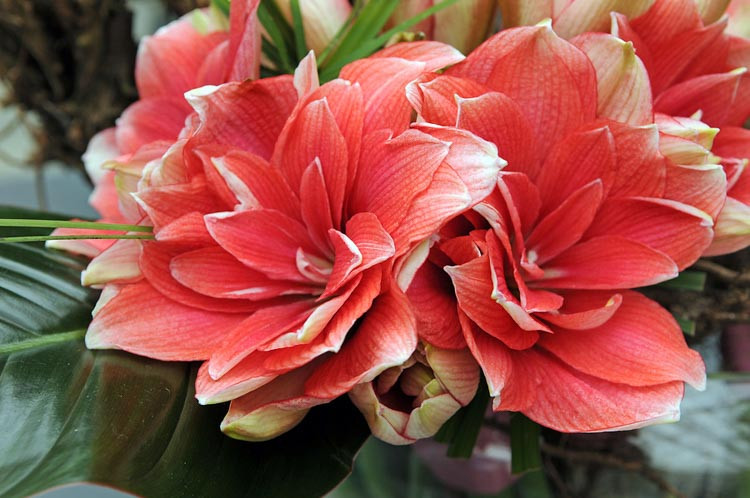Hippeastrum (Amaryllis)
Amaryllis (Hippeastrum spp.) is a popular, eye-catching flowering plant known for its large, vibrant blooms and easy-to-grow nature. Native to South America, amaryllis plants are part of the Amaryllidaceae family and are often grown indoors as a striking houseplant or outdoors in temperate climates.
Habit: Amaryllis plants are bulbous perennials characterized by their long, strap-like leaves and tall, erect flower stalks. The leaves are typically bright green and grow up to 2 feet (60 cm) in length. The flower stalks can reach heights of 12 to 24 inches (30-60 cm), bearing large trumpet-shaped flowers that can measure up to 6-8 inches (15-20 cm) in diameter.
Hardiness: Amaryllis are best suited to USDA hardiness zones 8-10, where they can be grown outdoors year-round. In colder climates, they are often grown indoors as a potted plant or planted outdoors during the warmer months and brought inside for the winter. It is important to note that amaryllis bulbs require a period of dormancy each year to promote successful blooming.
Flowers: Amaryllis flowers are their most notable feature. The blooms come in a wide range of colors, including red, pink, white, orange, and bicolor combinations. Each flower stalk typically bears 2-6 flowers that can last for several weeks. The plants typically bloom once a year, usually during the winter or early spring months.
Uses: Amaryllis make excellent indoor houseplants or outdoor ornamental plants in suitable climates. Due to their stunning blooms and architectural form, they are often used as focal points in gardens, borders, or containers. They are also popular as gifts, especially during the holiday season when their flowers can provide a cheerful pop of color in the colder months.
Benefits: In addition to their aesthetic appeal, amaryllis are relatively low-maintenance and easy to grow, making them an excellent choice for beginner gardeners or those with limited space. They are generally pest and disease-resistant. Furthermore, amaryllis plants are known to purify the air by removing toxins, providing an added benefit when grown indoors.

